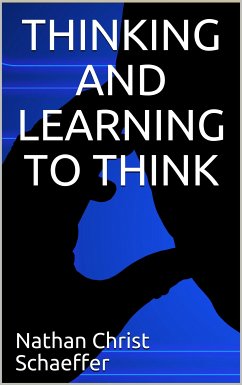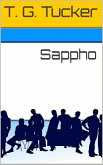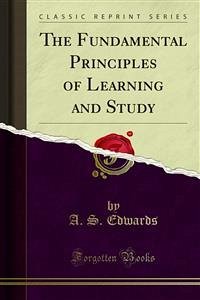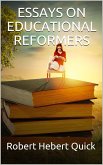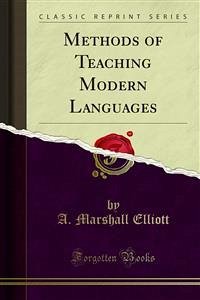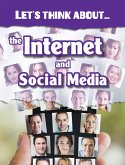Series Title: Lippincott Educational Series, Vol. 1
Contents
Make the pupils think -- Thinking in things and in symbols -- The materials of thought -- Basal concepts as thought-material -- The instruments of thought -- Technical terms as instruments of thought -- Thought and language -- The stimulus to thinking -- The right use of books -- Observation and thinking -- The memory and thinking -- Imaging and thinking -- The stream of thought -- The stream of thought in listening and reading -- The stream of thought in writing, speaking, and oral reading -- Kinds of thinking -- Thinking and knowing -- Thinking and feeling -- Thinking and willing -- Thinking and doing -- Thinking in the arts -- Thinking and the higher life.
For a number of years it has been the author’s duty as well as privilege to lecture at county institutes on the difficult art of teaching pupils to think. This led to the request that the lectures be thrown into permanent form for publication. The lecturer who never publishes has no pet theories to defend; he can change his views as often as he sees fit; yet, in spite of this advantage, he cannot always escape or ignore the art of printing. One who gives his thoughts to the public without the use of manuscript and under the limitations of extemporaneous speech, made necessary by the large audiences which gather at teachers’ institutes, especially in Pennsylvania, runs the risk of being misquoted and misunderstood; he pays the penalty of being reported in fragmentary if not distorted forms. This ultimately drives him, in justice to himself and others, to write out his theories on education and to give them to his coworkers in print.
Portions of these lectures were delivered at the annual meeting of the superintendents of New England, before the State teachers’ associations of Massachusetts, Rhode Island, and Florida, before the Connecticut Council of Education, before the summer schools held under the auspices of the Ohio State University and the University of Wisconsin, and at several of the meetings of the National Educational Association. The favorable hearing accorded on these occasions induces the hope that the lectures will be kindly received by many who teach outside of Pennsylvania, and by some who give instruction in our higher institutions of learning.
This volume is not designed to supplant systematic treatises on psychology and logic. Its aim is to throw light upon one important phase of the art of teaching. If it contributes but two mites to the treasury of information on the science and art of education, the labor bestowed upon it has not been in vain. Should any critic hint that two mites are all one has to give, it may be said in reply that it is better to give something than to give nothing at all, and that according to Holy Writ the smallest contributions are not to be despised if made in the right spirit. And it may add to the critic’s stock of ideas to be informed that a small English weight, called mite, outweighs very many of the current criticisms upon modern education, that of this small weight it takes twenty to make a grain, and that to a faithful teacher a tenth of a grain of helpful suggestion is worth more than many tons of destructive criticism.
Contents
Make the pupils think -- Thinking in things and in symbols -- The materials of thought -- Basal concepts as thought-material -- The instruments of thought -- Technical terms as instruments of thought -- Thought and language -- The stimulus to thinking -- The right use of books -- Observation and thinking -- The memory and thinking -- Imaging and thinking -- The stream of thought -- The stream of thought in listening and reading -- The stream of thought in writing, speaking, and oral reading -- Kinds of thinking -- Thinking and knowing -- Thinking and feeling -- Thinking and willing -- Thinking and doing -- Thinking in the arts -- Thinking and the higher life.
For a number of years it has been the author’s duty as well as privilege to lecture at county institutes on the difficult art of teaching pupils to think. This led to the request that the lectures be thrown into permanent form for publication. The lecturer who never publishes has no pet theories to defend; he can change his views as often as he sees fit; yet, in spite of this advantage, he cannot always escape or ignore the art of printing. One who gives his thoughts to the public without the use of manuscript and under the limitations of extemporaneous speech, made necessary by the large audiences which gather at teachers’ institutes, especially in Pennsylvania, runs the risk of being misquoted and misunderstood; he pays the penalty of being reported in fragmentary if not distorted forms. This ultimately drives him, in justice to himself and others, to write out his theories on education and to give them to his coworkers in print.
Portions of these lectures were delivered at the annual meeting of the superintendents of New England, before the State teachers’ associations of Massachusetts, Rhode Island, and Florida, before the Connecticut Council of Education, before the summer schools held under the auspices of the Ohio State University and the University of Wisconsin, and at several of the meetings of the National Educational Association. The favorable hearing accorded on these occasions induces the hope that the lectures will be kindly received by many who teach outside of Pennsylvania, and by some who give instruction in our higher institutions of learning.
This volume is not designed to supplant systematic treatises on psychology and logic. Its aim is to throw light upon one important phase of the art of teaching. If it contributes but two mites to the treasury of information on the science and art of education, the labor bestowed upon it has not been in vain. Should any critic hint that two mites are all one has to give, it may be said in reply that it is better to give something than to give nothing at all, and that according to Holy Writ the smallest contributions are not to be despised if made in the right spirit. And it may add to the critic’s stock of ideas to be informed that a small English weight, called mite, outweighs very many of the current criticisms upon modern education, that of this small weight it takes twenty to make a grain, and that to a faithful teacher a tenth of a grain of helpful suggestion is worth more than many tons of destructive criticism.

